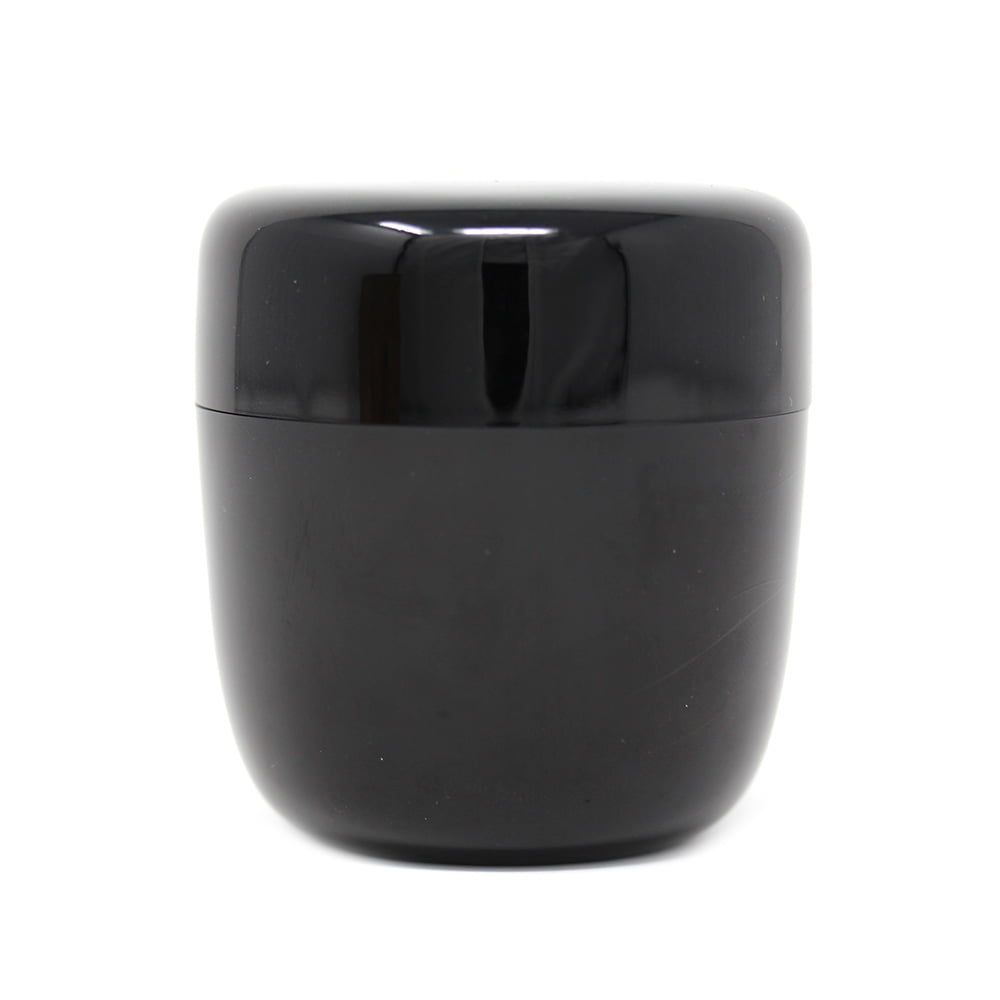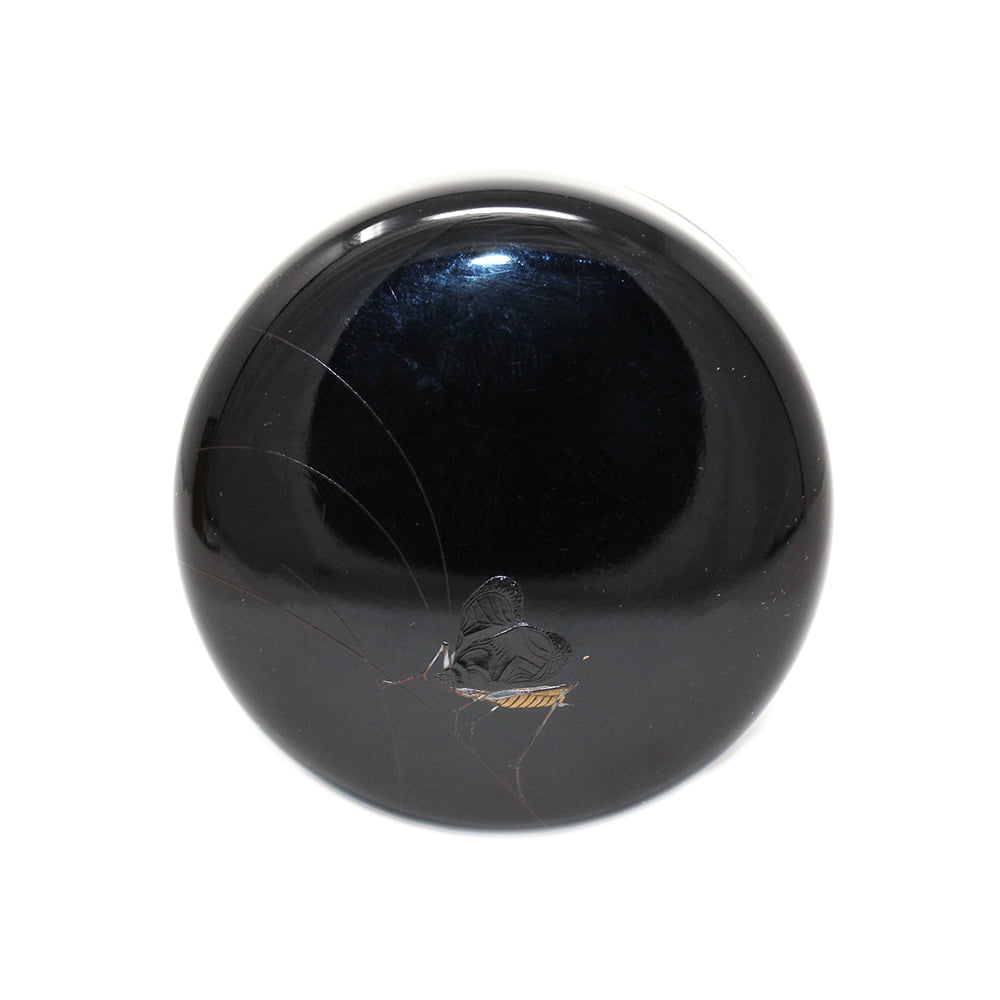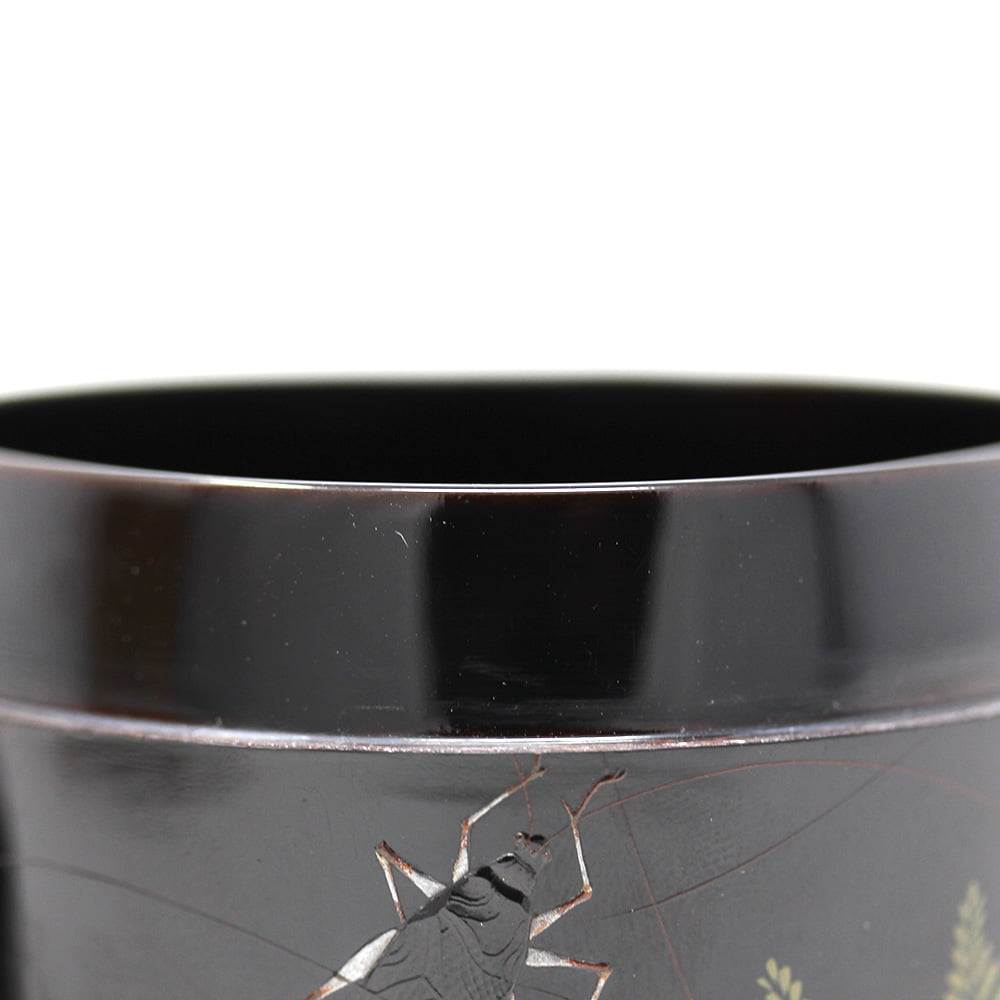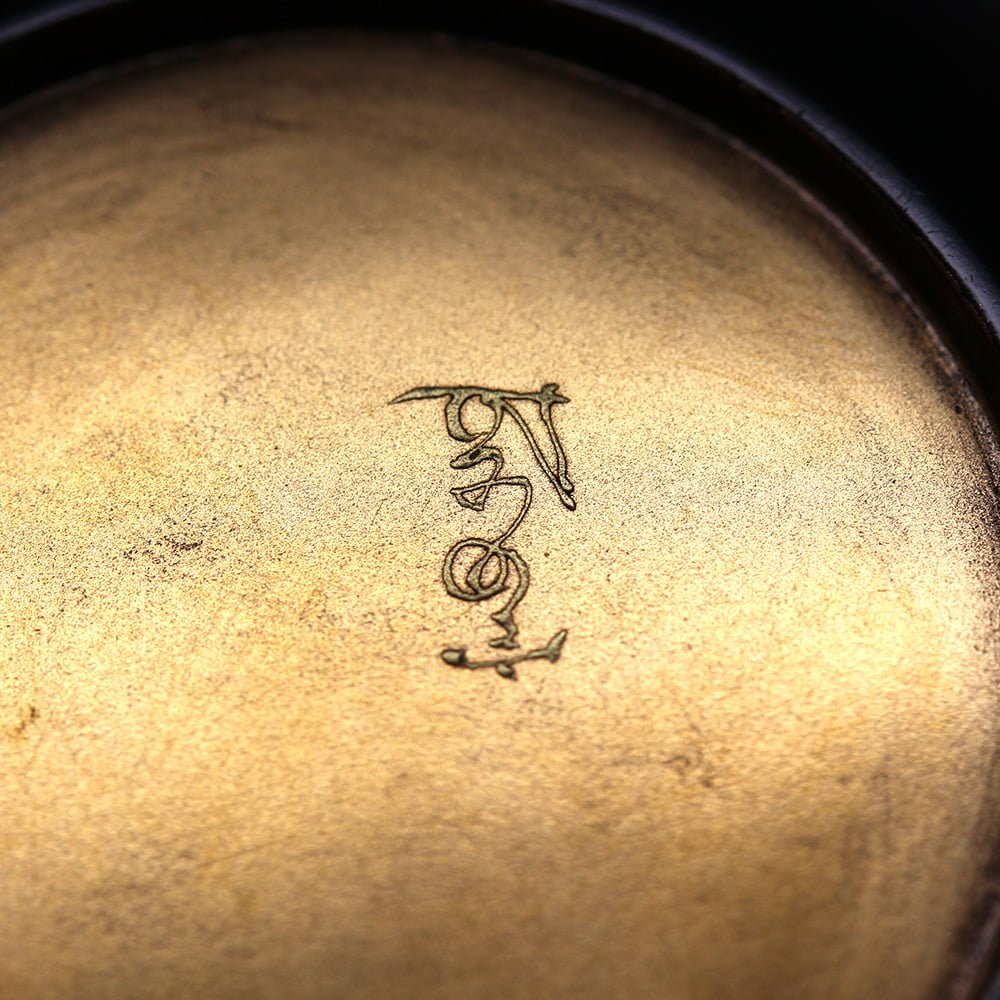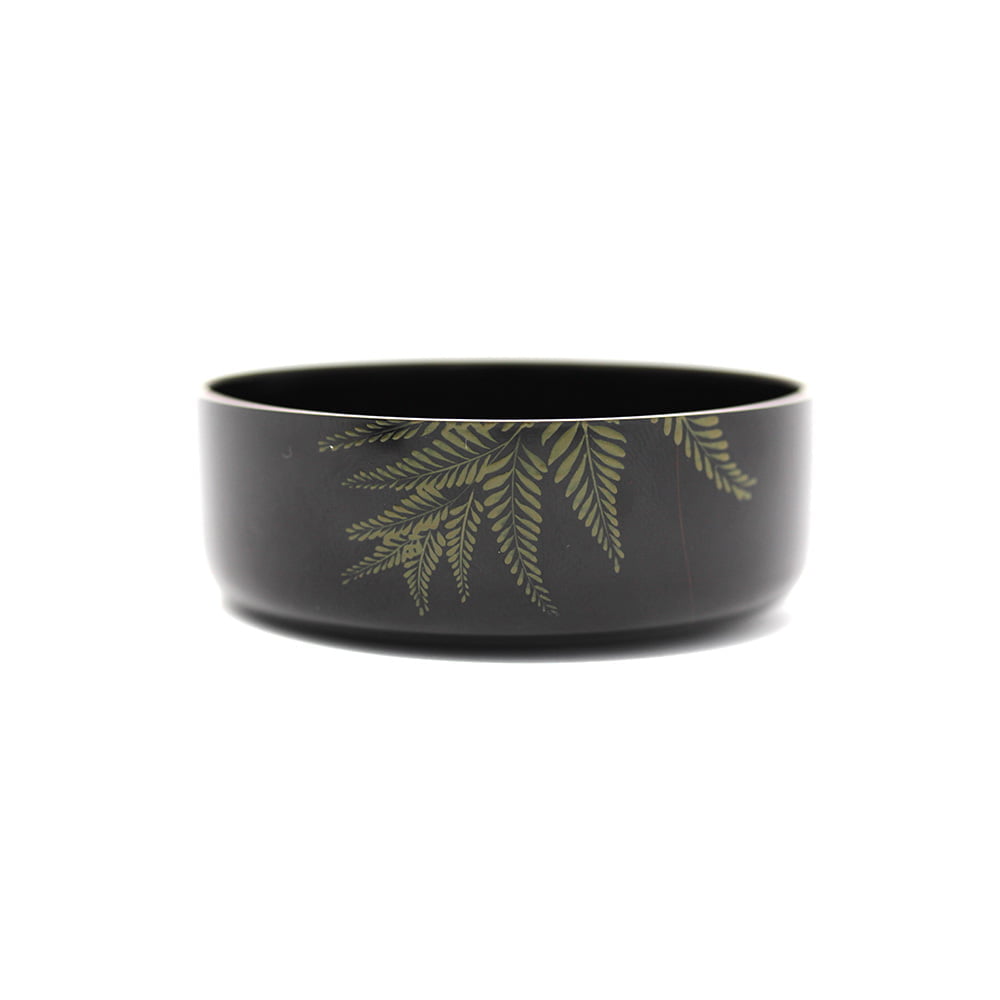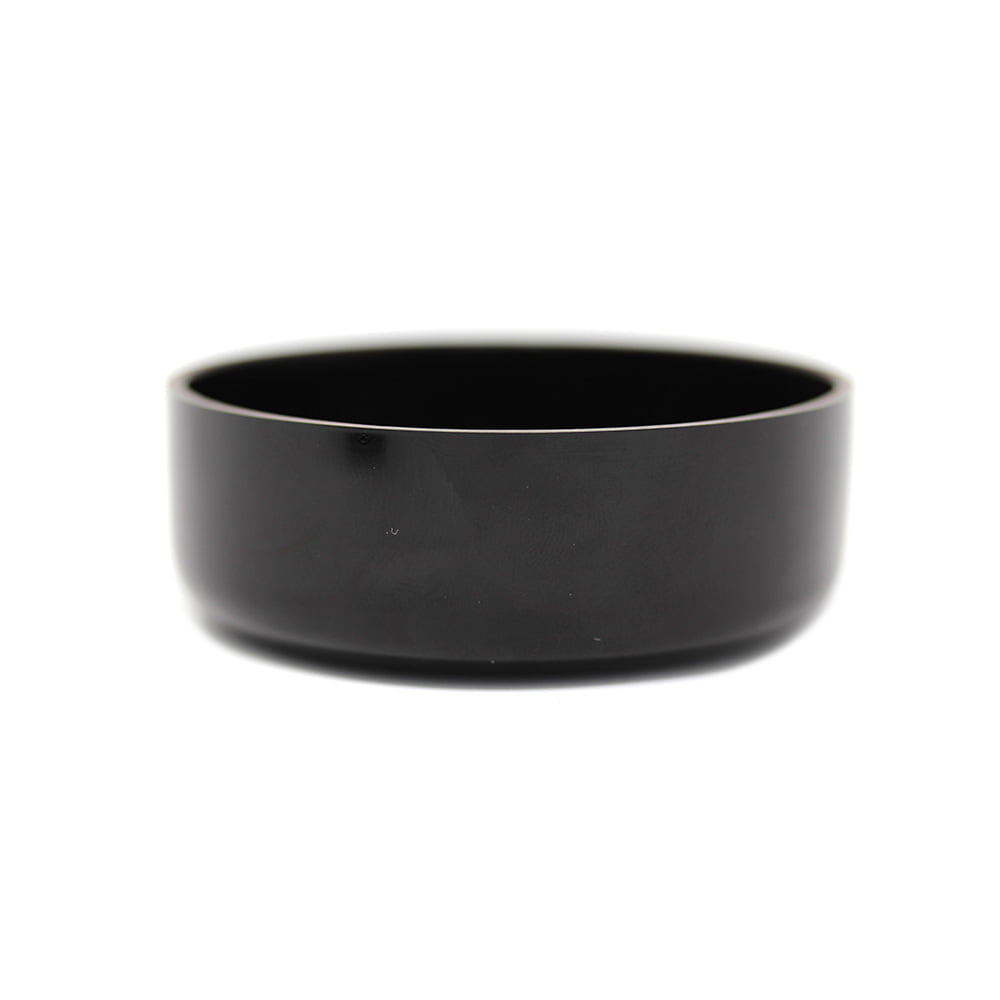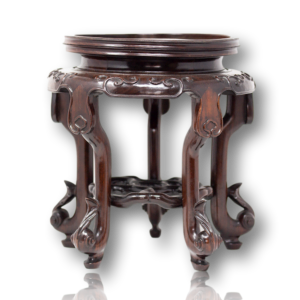Description
Fine natsume black lacquer Japanese 20th century by Saratani Tomizõ. The lidded tea caddy with rounded edges and flat base with two suzumshi – bell crickets native to Asia of exceptional detail with long antennae stretching across a large proportional of the box amongst three large foliage branched leaves. The box with a flat raised copper speckled metallic coloured base signed to the underneath. To the interior the box is pitch black in colour with no inside decoration. The original fitted box tied with a single ribbon and signed multiple times throughout. Chinese calligraphy to the wooden box reads 虫の画 Picture of insects/crickets, 黒中棗 black, medium sized natsume (tea caddy for keeping powdered tea).
Notes | Saratani Tomizo began his career in the 1960s, apprenticing under lacquer artists Saratani Katsuzo, his father, and Suzuki Masaya. He joined the Kyoto lacquer firm Zohiko in 1971. From 1975-1981 Saratani worked in Vienna as a restorer and lecturer in the Austrian National Museum of Applied Arts. He participated in the Vienna World Craft Exhibition in 1981. Between the 1980s – 1990s Saratani lived in London and Chicago, producing both his own work and working as an expert restorer. He returned to Japan, founding the lacquer company Kuri in Kaga, Ishikawa Prefecture, in 2009. Saratani is a superb practitioner of traditional Japanese lacquer styles and forms and is still living today. Tomizo the master craftsman that he is bares the weight of Japan on his shoulders as one of the few capable of performing such quality works using traditional methods and all his pieces demand exceedingly high values when sold.
Japanese Lacquerware (漆器, shikki) can be traced back to the Jōmon period (circa 14,000–300 BCE) and is a Japanese craft with a wide range of uses including in fine and decorative arts. Products coated with lacquer are recognisable by an extremely durable and glossy finish. A number of terms are used in Japanese to refer to lacquerware. Shikki (漆器) means “lacquer ware” in the most literal sense, while nurimono (塗物) means “coated things”, and urushi-nuri (漆塗) means “lacquer coating.”
The sap of the lacquer tree has traditionally been used in Japan to perform lacquerware decoration. However the substance is poisonous to the touch until it dries, the creation of lacquerware has long been practiced only by skilled dedicated artisans.
Reference | Victoria & Albert Museum for works by Tomizõ, also Bonhams Modern Decorative Art & Design 21st June 2017 Lot 81 and The Edward Wrangham Collection of Japanese Art 10th November 2015 Lot 165 for other examples by Tomizõ.
Condition | Excellent throughout.
Measurements | Natsume 7.2cm High x 6.8cm Wide – Box, 9.9cm High 8.5cm Wide














